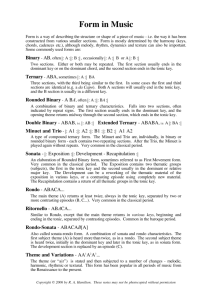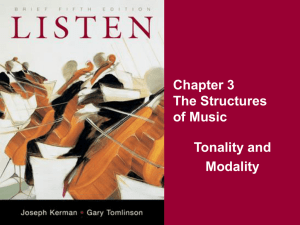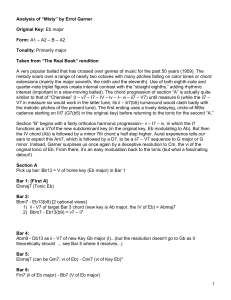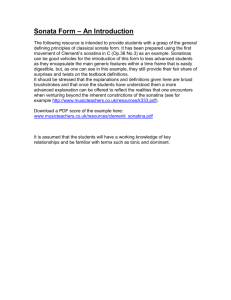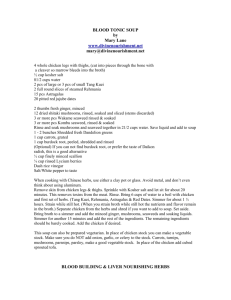Tonality of the Stravinsky
advertisement
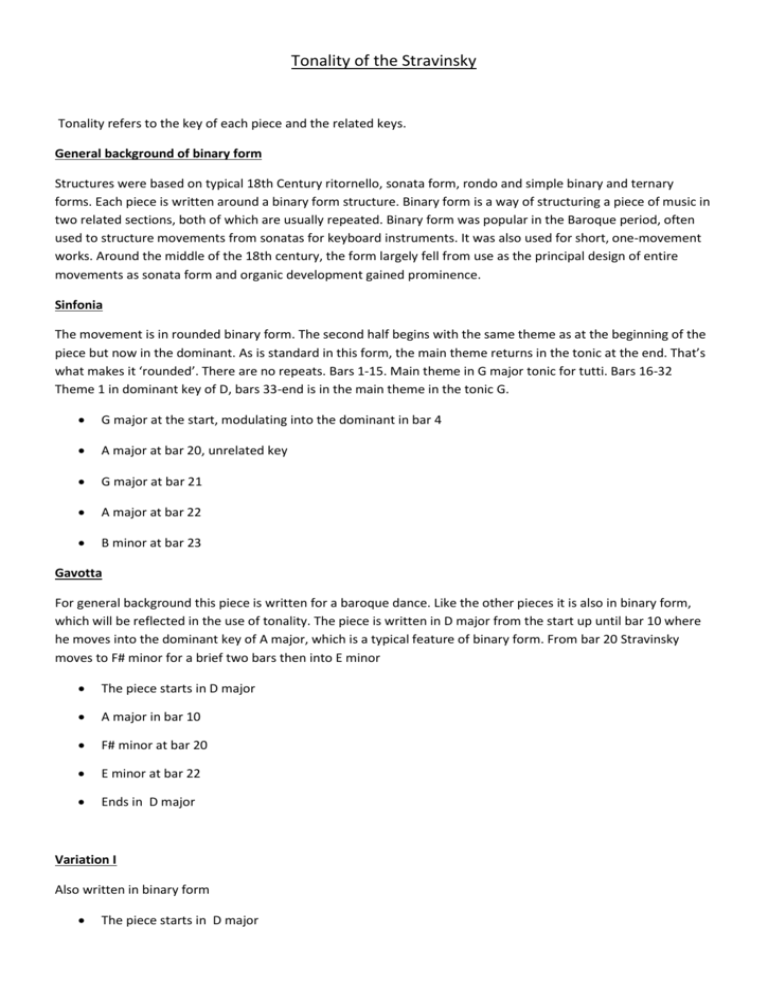
Tonality of the Stravinsky Tonality refers to the key of each piece and the related keys. General background of binary form Structures were based on typical 18th Century ritornello, sonata form, rondo and simple binary and ternary forms. Each piece is written around a binary form structure. Binary form is a way of structuring a piece of music in two related sections, both of which are usually repeated. Binary form was popular in the Baroque period, often used to structure movements from sonatas for keyboard instruments. It was also used for short, one-movement works. Around the middle of the 18th century, the form largely fell from use as the principal design of entire movements as sonata form and organic development gained prominence. Sinfonia The movement is in rounded binary form. The second half begins with the same theme as at the beginning of the piece but now in the dominant. As is standard in this form, the main theme returns in the tonic at the end. That’s what makes it ‘rounded’. There are no repeats. Bars 1-15. Main theme in G major tonic for tutti. Bars 16-32 Theme 1 in dominant key of D, bars 33-end is in the main theme in the tonic G. G major at the start, modulating into the dominant in bar 4 A major at bar 20, unrelated key G major at bar 21 A major at bar 22 B minor at bar 23 Gavotta For general background this piece is written for a baroque dance. Like the other pieces it is also in binary form, which will be reflected in the use of tonality. The piece is written in D major from the start up until bar 10 where he moves into the dominant key of A major, which is a typical feature of binary form. From bar 20 Stravinsky moves to F# minor for a brief two bars then into E minor The piece starts in D major A major in bar 10 F# minor at bar 20 E minor at bar 22 Ends in D major Variation I Also written in binary form The piece starts in D major A major at bar 42 D major at bar 43 Vivo This is the first of these extracts to use the full orchestra Like the Sinfonia this movement is again in rounded binary form. The first half modulates to the dominant (C) The second half begins in the tonic key. The music then goes through G major back to the tonic (F). The main theme then returns in the tonic key. Despite the dissonance we can always hear the underlying tonality. The piece starts in F major C major at bar 20-21 F major at bar 22 C major at bar 25 G major at bar 33 F major for the last page Disclaimer - This email and its attachments may be confidential and are intended solely for the use of the individual to whom it is addressed. Any views or opinions expressed are solely those of the author and do not necessarily represent those of Sir John Deane's College. If you are not the intended recipient of this email and its attachments, you must take no action based upon them, nor must you copy or show them to anyone. Please contact the sender if you believe you have received this email in error. Please consider the environment - do you really need to print this email?
